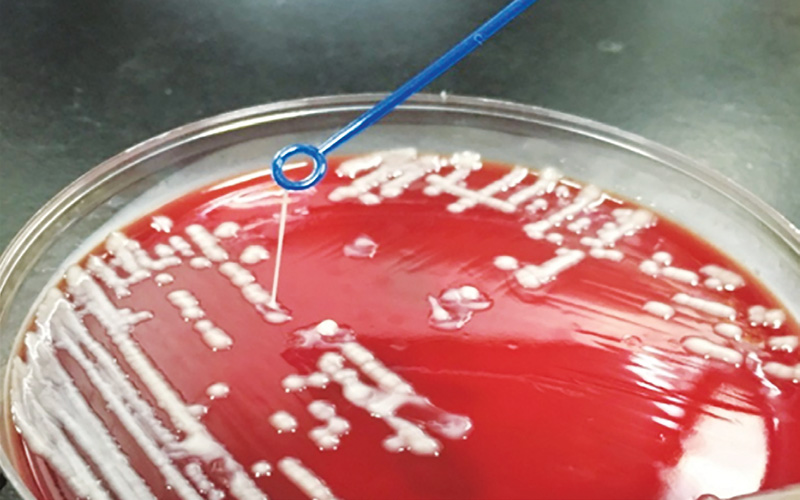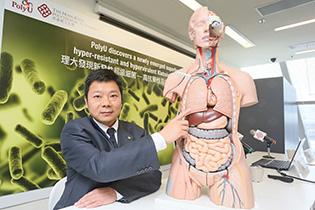
ST11 CR-HvKP strains possess a mucoid outer layer, enabling them to adhere to medical device surfaces, causing transmission in the hospital.
PolyU researchers have discovered a newly emerged hyper-resistant and hyper-virulent superbug that poses an enormous threat to human health.
A team of researchers from the Partner State Key Laboratory of Chirosciences at the Department of Applied Biology and Chemical Technology (ABCT) has uncovered a newly emerged superbug, Klebsiella pneumoniae. “This is a hyper-resistant and hyper-virulent strain that can cause untreatable and fatal infections in even relatively healthy individuals and poses an enormous threat to human health”, said ABCT researcher Prof. Chen Sheng.
The discovery was made when Prof. Chen collaborated with Prof. Zhang Rong from the Second Affiliated Hospital of Zhejiang University to investigate a fatal outbreak of pneumonia in 2016. Five patients who had undergone operations were admitted to the hopsital’s intensive care unit (ICU) between February and April and had developed severe pneumonia and died of septicemia and multiorgan failure within four months.
The cause in all five cases was an ST11 type of the carbapenem-resistant K. pneumoniae strain (ST11 CR-HvKP); such strains are hyper-virulent and are among the most transmissible in Asia. They proliferate in the gastrointestinal tract and can cause infections such as pneumonia, infecting not only the lungs but also the bloodstream and other internal organs. After acquiring a hypervirulent plasmid, such strains become resistant to carbapenem antibiotics and can cause difficult-to-treat or even untreatable and fatal infections in healthy individuals with normal immunity.
These superbug strains have a mucoid outer layer that enables them to adhere to materials such as medical device surfaces and the tubing used in ICUs. While the researchers are still investigating the transmission route, their data suggest that equipment such as ventilators and catheters may play a role, and human-to-human transmission is also possible, particularly in hospital settings.
Improved hospital infection prevention and control policies seem to be effective in preventing the further transmission of these strains in ICUs. However, strategies will have to be developed to prevent ST11 CR-HvKP from proliferating in the human intestinal tract. While detection is easy using the polymerase chain reaction method, effective treatments are still lacking.
Looking ahead, Prof. Chan said that “we plan to collaborate with clinicians in local hospitals to investigate the proportion of clinical K. pneumoniae isolates that belong to HvKP or CR-HvKP and characterise their genetic features”.
The research team’s important findings on K. pneumoniae were recently published in the prestigious journal The Lancet Infectious Diseases. ♦

